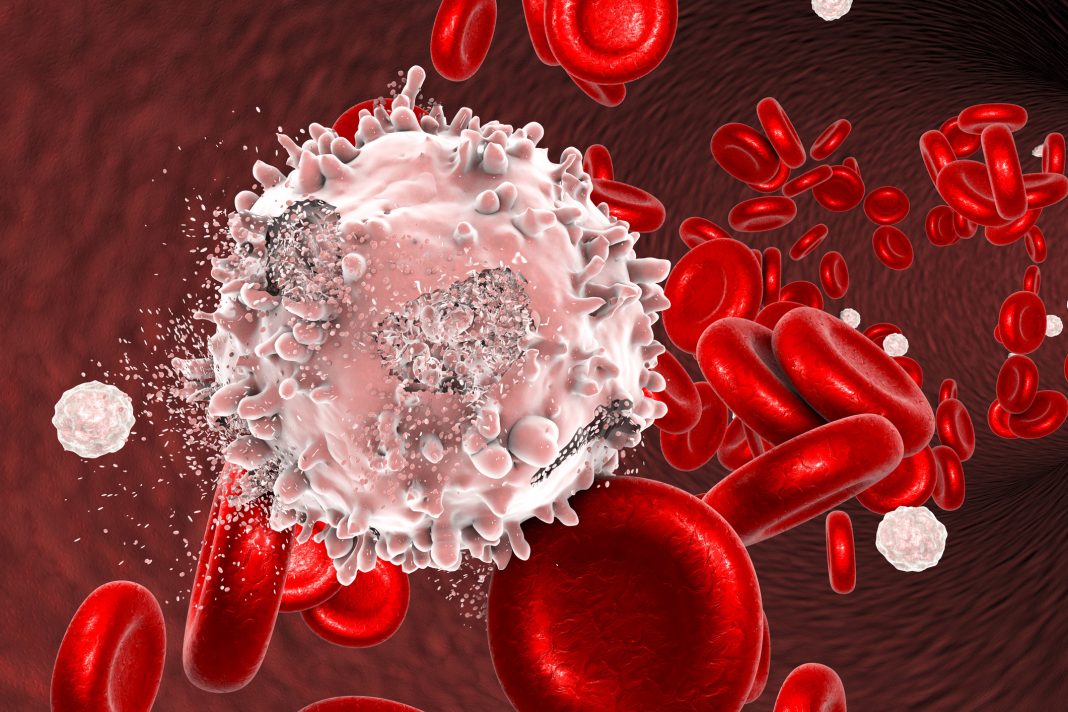A new study by researchers at Dana-Farber Cancer Institute, Brigham and Women’s Hospital, and the Broad Institute of MIT and Harvard has revealed the “genetic travelogue” of a cancer that evolves across multiple different tissues. The research may provide insights into how other cancers develop, particularly those involving blood or lymph cells that travel the bloodstream to all corners of the body.
The findings are published in Nature in an article titled, “Ultraviolet radiation shapes dendritic cell leukemia transformation in the skin.”
“Tumors most often arise from progression of precursor clones within a single anatomical niche,” wrote the researchers. “In the bone marrow, clonal progenitors can undergo malignant transformation to acute leukemia, or differentiate into immune cells that contribute to disease pathology in peripheral tissues. Outside the marrow, these clones are potentially exposed to a variety of tissue-specific mutational processes, although the consequences of this are unclear. Here we investigate the development of blastic plasmacytoid dendritic cell neoplasm (BPDCN)—an unusual form of acute leukemia that often presents with malignant cells isolated to the skin. Using tumor phylogenomics and single-cell transcriptomics with genotyping, we find that BPDCN arises from clonal (premalignant) hematopoietic precursors in the bone marrow.”
“The cells within our body live in very different environments depending on which organ or tissue they’re in,” said study co-senior author Andrew Lane, MD, PhD, director of the BPDCN Center at Dana-Farber. “In this study, we demonstrate how exposure to more than one of these environments can shape the evolution of premalignant cells to tumor cells.
“The results add to our understanding of the development of BPDCN, which is critical to devising new and better treatments for the disease,” he continued. “They may also be applicable to any cancer that evolves in more than one site—and potentially to how cancers change after they’ve metastasized to other parts of the body.”
“At the time patients first come to medical attention, about half of them have tumors of leukemia cells in their skin, but when we examine their bone marrow, blood, or lymph nodes—where we’d expect to find leukemia cells—we don’t see anything abnormal,” said Lane. “The other half have skin tumors as well as leukemia cells in the more traditional places.”
The symptoms of the first group of patients are puzzling because, according to the model of how leukemia progresses, cancerous cells first appear in the bone marrow, then travel via the blood to other parts of the body, including the skin. The fact that these patients had skin lesions but, apparently, normal marrow defied that model.
The researchers sought to solve the mystery by collecting samples of bone marrow and skin tumors from 16 patients, including those whose bone marrow looked normal, and analyzing the cells for genetic mutations.
In patients whose only sign of disease was in the skin, researchers found that the ostensibly normal bone marrow cells had mutations that matched some of the mutations of the leukemia cells in the skin. This suggests that BPDCN begins in the bone marrow as a condition called clonal hematopoiesis (CH) and shows up in the skin as leukemia cells with additional mutations.
The researchers sequenced the DNA and RNA in individual cells.
“We wanted to determine which cells in the bone marrow and blood are acquiring these initial mutations, and which cells are accruing the mutations we see in the skin leukemia tumors,” Lane explained.
The researchers developed a new technological approach they called eXpressed Variant sequencing (XV-seq) that integrates two powerful forms of genetic analysis, single-cell gene expression and genotyping.
“We needed a high-resolution view into how these tumors were evolving so that we could see which mutations arose early in disease, which ones appeared later, and in which cells,” said study co-senior author Peter van Galen, PhD, of Brigham and Women’s Hospital and the Broad. “XV-seq allowed us to precisely identify mutation-carrying cells and pinpoint rare circulating malignant cells that standard clinical approaches couldn’t see.”
They found that all the patients had blood and bone marrow cells with early CH mutations. They then identified the culprit for the added mutations in the skin leukemias: ultraviolet rays in sunlight.
“We found that in the tumors in the skin—and in leukemia tissue from blood and bone marrow—the leukemia cells had mutations caused by ultraviolet [UV] radiation,” Lane remarked. (Scientists have mapped the specific patterns of gene mutations produced by UV light.) “In some patients, a single CH cell in the bloodstream had to have been exposed to ultraviolet radiation—and picked up additional mutations—before it could become a leukemia cell.”
The researchers then enlisted dermatological researchers to determine where patients’ skin lesions first formed. “We found that almost all of them occurred in sun-exposed areas,” Lane related. “In other types of leukemia that can invade the skin, the lesions are randomly distributed across the skin. Our findings strongly suggest that skin exposure to UV rays, and the resulting genetic mutations, are part of the process of this disease.”


